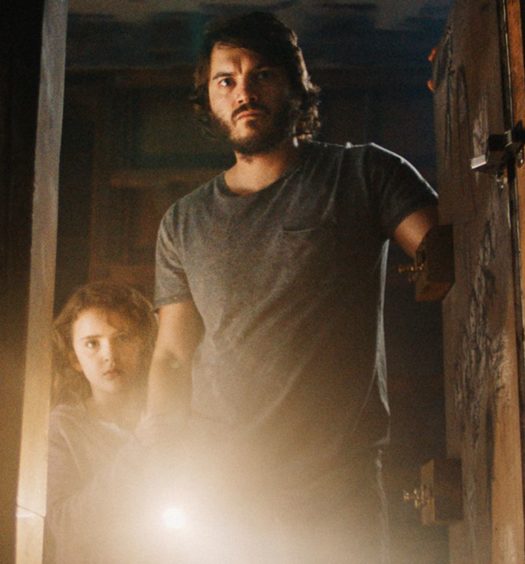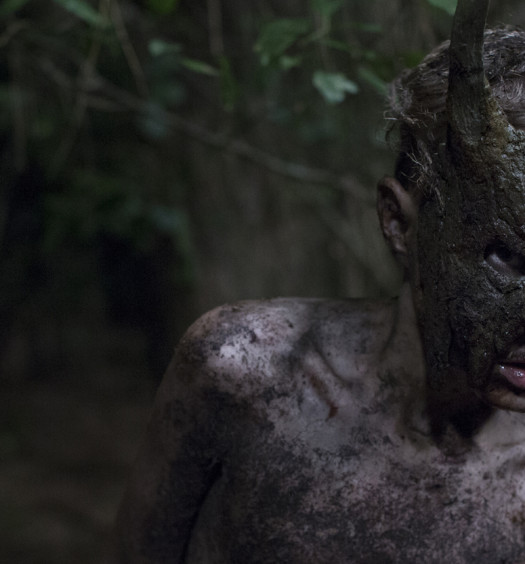By the nature of its own premise, Velvet Buzzsaw is a challenge.
The concept of a spooky thing that brings death and destruction to all who see it, hear it, watch it, read it, etc. is one that tends to be more impactful in literature. From Robert W. Chambers’ “The King In Yellow” to Charlotte Perkins Gilman’s “The Yellow Wallpaper” and other non-yellow reads in between, stories where we’re forced to imagine the haunted entity become all the more haunting.
With that in mind, I have to hand it to Dan Gilroy. He really goes for it here. And where countless others have come up short with cheap, lazy films focused on cursed objects, Velvet Buzzsaw provides just enough interesting characters and inspired world-building to overcome a lackluster story.

As the tough-to-please art critic Morf Vandewalt, he’s not always very likable, but he’s consistently engaging.
Gilroy’s first smart decision with this project was leaning on Jake Gyllenhaal to be his narrative anchor, as he was in Nightcrawler, Gilroy’s brilliant directorial debut.
Honestly, it feels a bit exhausting to hear “Jake Gyllenhaal is at the top of his game” year after year, but it simply doesn’t stop being true. More than just about any actor under 40, Gyllenhaal is constantly pushing himself into new territory and flexing his talents, and that’s certainly the case here. As the tough-to-please art critic protagonist Morf Vandewalt (a befitting name, to be sure), he’s not always very likable, but he’s consistently engaging. And while Vandewalt isn’t on the level of the mesmerizing Lou Bloom of Nightcrawler, it’s clear that Gilroy and Gyllenhaal have a special connection.
As one might expect in the art world, Vandewalt is surrounded by an eclectic ensemble made up of artists, agents, curators, and underlings just trying to get by. Art jargon is constantly bandied about, toeing the line between hilarious and exhausting with each snappy one-liner. Gyllenhaal is supported by fine performances from Rene Russo, Toni Collette, Daveed Diggs, and John Malkovich (who plays a grumpy, jaded painter as well as you think he can) in particular, but there are lots of terrific actors in minor roles here, like Natalia Dyer, Pat Healy, Billy Magnussen, and Kevin Carroll.
In fact, it almost works against the film that the characters are so well-drawn here, because when the plot kicks in, it starts to stall.

Unfortunately, outside of a creative trio of kills at the end and one gruesome death-by-art-exhibit scene, there’s not a lot of gore to be had.
Essentially, we have a struggling art gallery worker in Josephina (played by Zawe Ashton) who, quite conveniently, happens upon a dead man in her building named Vetril Dease who left behind over a thousand rather compelling paintings. He left a suicide note of sorts for the maintenance crew to destroy all of them, but Josephina (in good taste and poor taste all at once) takes them for herself and, with the help of her boss, turns Dease into a posthumous sensation while cashing in on his abandoned work.
Here’s where the horror elements kick in. The paintings—which are sufficiently creepy, even to the untrained eye—start to take on a life of their own as they induce insanity in all those who come in contact. Unfortunately, outside of a creative trio of kills at the end and one gruesome death-by-art-exhibit scene, there’s not a lot of gore to be had; that’s a bit disappointing for a film with “buzzsaw” in the title.
The other elements of the script tend to be hit-and-miss throughout. There are some humorous moments, including a particularly good recurring joke where one character keeps discovering dead bodies, but just as often the writing feels a bit flat. And in moments like the juxtaposition of a woman’s crotch smash-cutting to a close-up of a hairless cat, it’s not very subtle either.
As a critique of the art world, Velvet Buzzsaw doesn’t quite live up to the level of something like The Square, but it’s certainly unafraid to explore the territory. And with that in mind, I appreciate Velvet Buzzsaw for what it isn’t, too. Without giving too much away, there’s more left to the imagination that one might expect from a set-up of this caliber, where everything tends to be over-explained and endlessly mythologized in lesser films.
Sure, there may not be lots of big ideas or thematic fodder to chew on. And it may not satisfy hardcore horror fans’ bloodlust. But there’s enough of an artful spin on a familiar tale to make it worth your while.
‘Velvet Buzzsaw’ Throws Bloody Spaghetti at the Wall, and Some of it Sticks [Review]
Pretty Decent
Velvet Buzzsaw is supported well enough by rich characters and the absorbing world of modern art to overcome some story issues and a general lack of gore.































